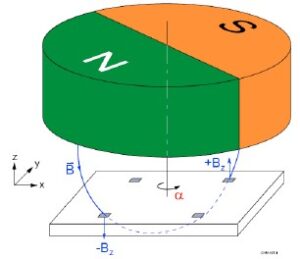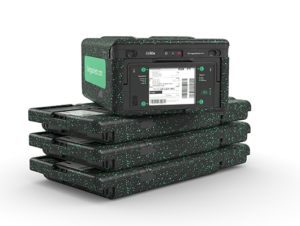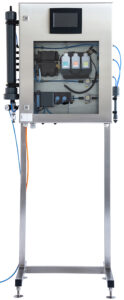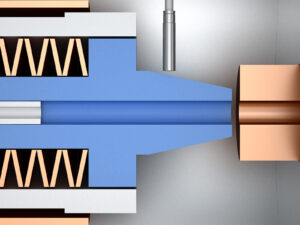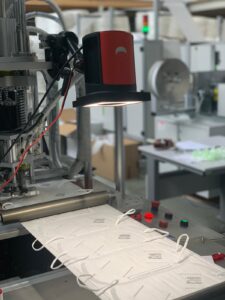Manufacturers supported by Made Smarter, the movement helping SMEs join the Industry 4.0 revolution, are forecasting the creation of more than 750 new jobs from £12.6M of technology investment.
Since launching two years ago, the North West technology adoption pilot has engaged with 1,131 businesses to help them introduce digital tools and technologies to help boost productivity and growth, and navigate the impact of Covid-19.
542 manufacturers have received intensive support including expert, impartial technology advice, digital transformation workshops to help manufacturers take their first steps to transform their business, a leadership programme, and funded digital technology internships.
126 businesses have secured £3.2M matched funding for 155 projects which are worth £12.6M after private sector investment.
These technology adoption projects are forecast to deliver an additional £118.9M in gross value added (GVA) for the North West economy over the next three years, create 761 new jobs, and upskill 1,585 existing roles.
Some manufacturers are developing projects using technologies which enable them to integrate systems, capture and analyse data, and even create simulations of their plants and processes. Others are using 3D-printing, automation, and robotics to solve business challenges and meet increased demand.
Over 80% of SMEs working with Made Smarter to adopt cutting-edge technologies have seen a boost in productivity, and more than 25% reduced their carbon emissions. Businesses will also benefit from increased revenue, profits and exports, and lower energy bills.
Among the latest wave of manufacturers to secure funding for technology projects are: Daedalian Glass, (Poulton-le-Fylde); Eluceda (Burnley); Energy Ace (Chorley); Fairbrother & Grimshaw Engineering (Blackburn); Tool Management Services (Accrington); Sandstone Wirral (Heswall); Generation Juice (Birkenhead); Brainboxes (Liverpool); Shand Higson and Co. (Knowsley); The Uniform Factory (Liverpool); Forest Sofa (Salford); Garton Ltd (Wigan); Norlin Compounding Services (Bolton); Northwest Crankshaft & Machine Ltd (Wigan); Pilot Group Infrastructure (Manchester); Crystal Doors (Rochdale); Rotite Technologies (Stretford); Visual Architects (Hyde); Effective CNC Solutions Ltd (Crewe); Garnett Farms Engineering (Knutsford); Technoprint (Winsford); and Wireco (Congleton).
Lefteris Angelidis, Managing Director of Visual Architects, a designer and manufacturer of event interiors based in Hyde, said: “Made Smarter has been rocket fuel for our company. With the programme’s support we have not only analysed where we are now but looked well into the future and mapped out a real solid direction.
“Made Smarter has also enabled us to invest into robotics, new machinery and a digital technology intern to assist us in advancing our company to the next level.
“Made smarter has been one of the most valuable assets a company could ask for.”
Matthew Harte, Managing Director of Eluceda, a detection technology business in Burnley, said: “With the support of Made Smarter, we have accelerated our development of a next generation solution to meet the demand for cheaper and simpler rapid testing and screening.
“Successful delivery of the project will have a significant transformational impact on the business, increasing revenues, accelerating growth, creating jobs and developing new markets.”
Meanwhile, several manufacturers who have experienced the benefits of Made Smarter support, are
taking the next step in their digitalisation journey including: Inscape Interiors (Chorley); Panaz (Burnley); Pendle Doors (Blackburn); The Protein Lab (Blackpool); Nutree Life (Preston); Openhouse Products (Birkenhead); Organica (UK) Ltd; (Wallasey); Beverston Engineering (Knowsley); Parity Medical (Birkenhead); Astropol (Wigan); Fabricon Design (Ashton-under-Lyne); Manchester Manufacturing Group (Denton); The Bury Black Pudding Co (Bury); Contactless Check Solutions (Maryport); and Storth (Holme).
Chris Wright, Managing Director of Astropol, a colour masterbatch and additive specialist based in Wigan, said: “With the support and advice of Made Smarter we have been able to invest in data and systems integration projects which will connect our entire business, helping us achieve complete digitalisation.
“This will transform our business, giving us complete visualisation, transparency and access to real time data, which we can use to improve productivity, find efficiencies, achieve manufacturing excellence, and drive sales in home and export markets.”
Richard Morris, Production Director for the Bury Black Pudding Company, a food manufacturer, said: “We have identified a pathway to achieving that ambition which starts with data and systems integration, then analytics, and automation. Working with the team at Made Smarter has accelerated our plan by years.”
Juergen Maier CBE, Chair of Made Smarter, said: “I am delighted to see the positive impact that Made Smarter’s adoption pilot is having on individuals, businesses, the environment, and the UK economy.
“In the tumultuous times we face, it can be tempting to simply cut costs rather than invest. Yet, in the long term, this approach runs the risk of businesses getting left behind. For the UK manufacturing sector to thrive and become a world leader, we need to find ways to encourage innovation and the adoption of digital technologies.”
As well as technology, Made Smarter has supported manufacturers to develop digital strategies and new skills.
91 manufacturers are targeting growth through innovation using Made Smarter’s digital transformation workshop process, a rapid and bespoke process designed to accelerate manufacturing growth by identifying digital tools and technologies that can maximise operational processes and enhance business growth.
64 of the region’s business leaders are now equipped with the vision and the skills to pursue smarter manufacturing through the Made Smarter Leadership programme, in partnership with Lancaster University and now also delivered by the University of Liverpool and Manchester Metropolitan University.
31 manufacturers have benefited from Made Smarter’s digital technology internships which offer students and graduates paid placements to work on live technology projects. Some have even secured jobs following their placement.
Donna Edwards, North West Pilot Programme Director at Made Smarter, said: “Over the last two years the pilot has proven the value technology can bring to the manufacturing sector.
“We have helped hundreds of North West makers start their digital journey by providing them with specialist advice to help them select the right approach, level of investment and tools for their business.
“We have seen huge success with Made Smarter-supported businesses reporting growth, productivity and efficiency gains, job creation and high-value jobs. We’re also playing a crucial role in helping the UK reach its ambitious aim of net-zero greenhouse gases by 2050.
“Reaching 155 funded projects which will support 126 businesses create over 750 new jobs and the upskill almost 1,600 existing roles is a tremendous achievement.
“We are determined to continue reaching out to the region’s SME manufacturers to connect them to the tools that will make an everyday difference to their businesses. I would encourage manufacturers to contact Made Smarter to ensure they don’t miss out.”

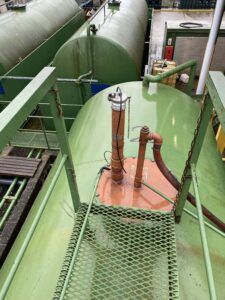
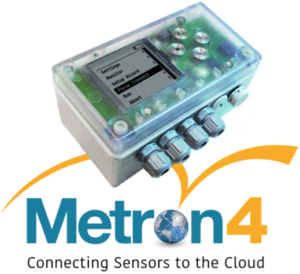 Metron4 can use external power or be battery/ solar powered for use in remote and rural locations. Metron4 m2m devices can measure up to four tanks and represent particularly good value where multiple tanks are located close together. Metron4 telemetry hardware supports 2G and 4G, offers operational temperatures – 25 to +65°C for global deployment and comes in an IP67 enclosure.
Metron4 can use external power or be battery/ solar powered for use in remote and rural locations. Metron4 m2m devices can measure up to four tanks and represent particularly good value where multiple tanks are located close together. Metron4 telemetry hardware supports 2G and 4G, offers operational temperatures – 25 to +65°C for global deployment and comes in an IP67 enclosure. Instrumentation Monthly Test | Measurement | Control
Instrumentation Monthly Test | Measurement | Control




